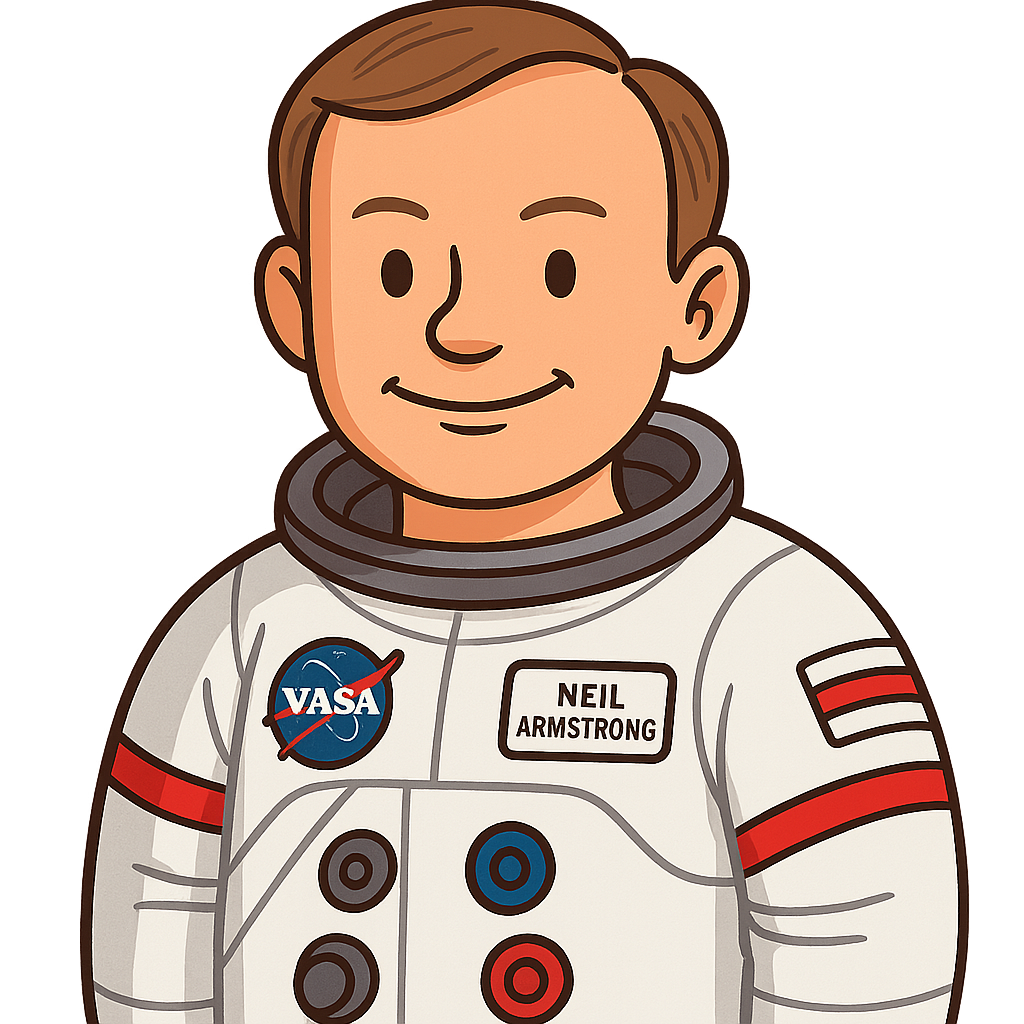Neil Armstrong: First Man on the Moon
Hello there. My name is Neil Armstrong, and I have a story to tell you about looking up at the sky and dreaming of flying among the stars. It all began when I was a young boy growing up in Ohio. The world was full of amazing new inventions, but the one that captured my heart was the airplane. When I was just six years old, back in 1936, my father took me for my very first flight in a rattling little plane called a Ford Trimotor. I remember pressing my face against the window, watching the houses and farms get smaller and smaller. The feeling of lifting off the ground and soaring through the clouds was pure magic. From that day on, I was hooked. I spent hours in my room building model airplanes, carefully gluing each tiny piece together and imagining I was the pilot on a great adventure. I even got a job at a local pharmacy to save up money for flying lessons. My hard work paid off, because on my 16th birthday in 1946, I earned my student pilot's license. It’s funny to think about, but I could officially fly an airplane all by myself before I was even allowed to drive a car.
My love for flying followed me as I grew up. I went to Purdue University to study how to design and build airplanes, but my studies were paused when I became a pilot for the U.S. Navy. I flew fighter jets during a conflict called the Korean War. After the war, I got one of the most exciting and dangerous jobs a pilot could have: I became a test pilot. My job was to fly brand-new, experimental aircraft—planes that were more like rockets. I flew a plane called the X-15, which zoomed to the very edge of space, higher and faster than anyone had ever gone before. It was my job to push these machines to their limits to see what they could do. This work was risky, but it taught me how to stay calm and think clearly when things went wrong. Because of my experience, in 1962, I was chosen to join NASA's second group of astronauts. The training was incredibly tough, both for our minds and our bodies. My first trip to space was on the Gemini 8 mission in 1966. During that flight, our spacecraft started spinning wildly out of control. It was a terrifying moment, but my test pilot training kicked in. I stayed focused and managed to stop the spin, allowing us to return home safely. It was a close call that prepared me for the even bigger challenge ahead.
Finally, the moment came that would change my life, and the world, forever. I was chosen to be the commander of the Apollo 11 mission, the first attempt to land humans on the Moon. My crewmates were Buzz Aldrin and Michael Collins, two of the bravest men I knew. On July 16, 1969, we sat on top of a giant Saturn V rocket as it rumbled and shook beneath us, ready to blast off. Four days later, Buzz and I were in our lunar lander, which we called the Eagle, preparing to land on the Moon's surface. It was one of the most tense moments of my life. Alarms started buzzing in the cockpit, and I saw that the spot our computer was taking us to was covered in big rocks. We were running very low on fuel, but I knew I had to take control. I steered the Eagle past the boulders and found a smooth, safe place to land. On July 20, 1969, I opened the hatch, climbed down the ladder, and placed my boot onto the dusty gray surface. Looking at the Earth, a beautiful blue and white marble hanging in the black sky, I said, “That's one small step for a man, one giant leap for mankind.” I lived until 2012, but I never forgot that feeling. My journey taught me that with courage, teamwork, and a whole lot of curiosity, humans can achieve anything they set their minds to.
Reading Comprehension Questions
Click to see answer
